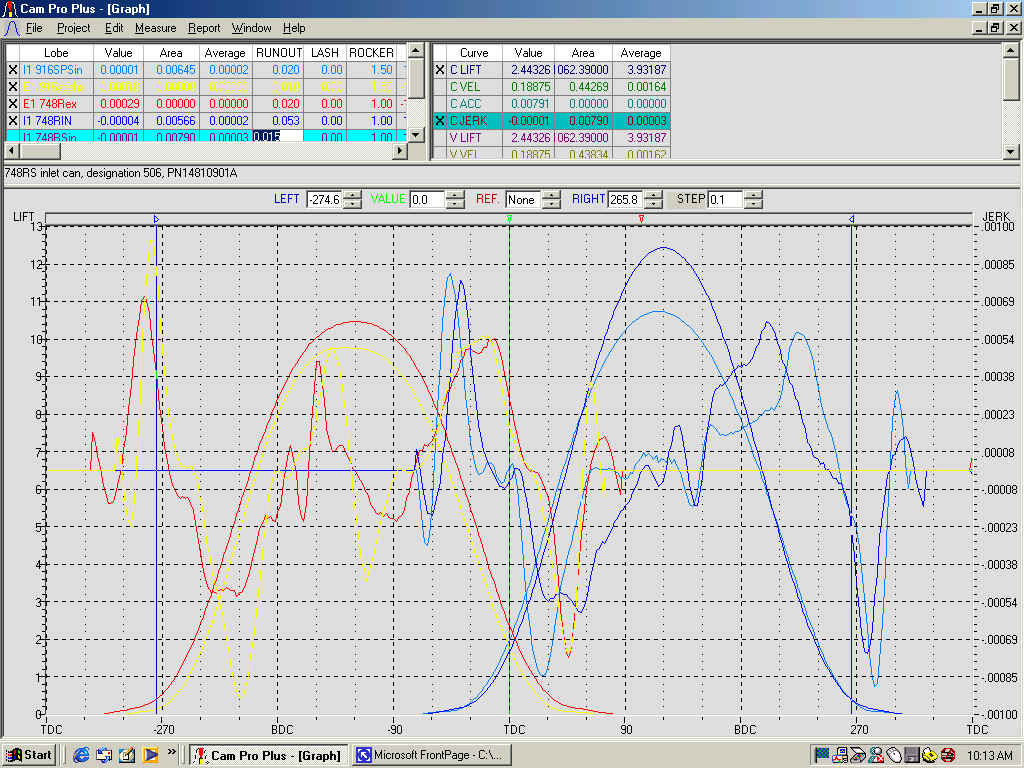
Comparison of 916 SPS and 748R cams
The timing specs for these cams may be off a little, but the question is about acceleration.
On the acceleration graph, the positive values represent loading on the opening rocker-arms, the negative values represent loading on the closing rocker-arm and keepers.
The greatest significant difference is the inlet peak de-acceleration, where the SPS cams have 148% of that of the 748R. That represents pounding of the keepers.
Opening acceleration of the exhausts and closing acceleration of the inlet is slightly higher for the 916SPS cams. However, with the exception of the inlet peak de-acceleration, all of the acceleration levels are in similar ranges.
Maybe the peak nose accelerations were sacrificed to homologate the lift?!?

As the chart below shows, the nose de-celerations are lower on both the RS cams vs the R cams, while the positive accelerations are much higher

Finally, one has to look at the jerk values. Jerk is change in acceleration, as acceleration is change in velocity. I've been told by engineers (when I worked at Onan Corp.) that jerk is what causes problems for tappets. It might be that jerk breaks though oil films. Whatever the result, the chart below shows the jerk values for the cams in question.
You'll notice that the 748RS exhaust cam has high jerk values on exhaust opening, and slightly lower jerk values on the closing ramp.
I don't pretend to know the difference between the effects of acceleration and those of jerk, but there are the values.
You'll have to ask some of your engineer customers and make a decision from that.
